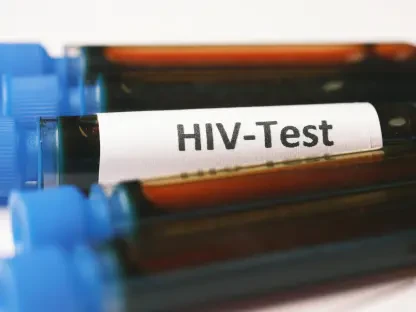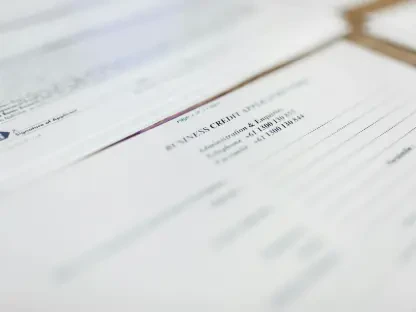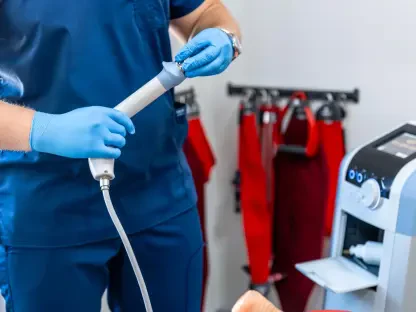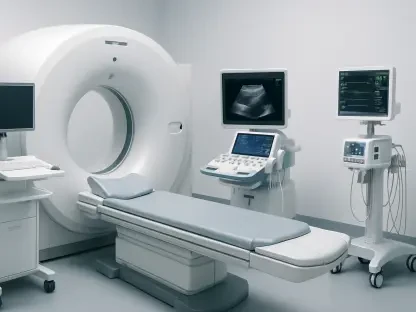What if a tiny device, no larger than a bandage, could predict a life-threatening heart condition before any symptoms even appear, offering a new lifeline to millions? Across the United States, countless individuals grapple with cardiovascular disease, often unaware of silent risks until it’s too late. With heart failure claiming numerous lives each year as a leading cause of mortality, the arrival of wearable heart monitors offers a glimmer of hope. These innovative tools, worn discreetly on the chest, are poised to revolutionize how cardiac health is monitored, potentially saving lives through early detection and intervention.
The significance of this technological leap cannot be overstated. As traditional methods of heart monitoring often involve invasive procedures or bulky equipment, accessibility and patient comfort have long been barriers to effective care. Wearable devices, such as the recently FDA-cleared CardioTag by Cardiosense, promise to bridge this gap by delivering real-time data with minimal intrusion. This development marks a turning point, shifting cardiac care toward a more proactive, patient-friendly approach that could redefine standards in the medical field.
A Silent Revolution on the Chest: Unveiling Wearable Heart Tech
At the forefront of this transformation stands CardioTag, a wearable heart monitor that captures intricate details of cardiac activity without the need for invasive methods. Designed to adhere comfortably to the skin, this small patch-like device represents a significant departure from conventional monitoring systems. Its ability to provide continuous insights into heart function signals the dawn of a new era where technology integrates seamlessly into daily life.
The implications of such advancements extend beyond mere convenience. By eliminating the discomfort and risks associated with implantable sensors, this technology paves the way for broader adoption among patients who might otherwise avoid regular monitoring. The potential to democratize cardiac care through a simple, wearable solution is a compelling reason to explore its impact further.
Moreover, the development of these devices reflects a growing trend in healthcare toward noninvasive solutions. With FDA clearance already secured for CardioTag, the stage is set for rapid integration into clinical settings. This milestone underscores a shift in focus to tools that prioritize both efficacy and ease of use, setting a new benchmark for innovation in the sector.
Why Wearable Heart Monitors Are Critical Today
Cardiovascular disease continues to burden millions of Americans, often striking without warning due to delayed diagnosis. Statistics paint a grim picture, with heart failure affecting over 6 million individuals nationwide, many of whom remain undiagnosed until critical stages. The urgency for accessible and efficient monitoring solutions has never been greater as healthcare systems strive to address this pervasive issue.
Traditional approaches, such as implantable sensors, while effective, come with significant drawbacks, including high costs and physical discomfort. These barriers often deter patients from consistent monitoring, exacerbating the risks of undetected complications. Wearable monitors offer a stark contrast by providing a user-friendly alternative that encourages adherence without compromising on accuracy.
The rise of these devices aligns with a pressing need to reduce mortality rates associated with heart conditions. By enabling real-time data collection, technologies like CardioTag empower earlier interventions, potentially altering the trajectory of patient outcomes. This shift toward preventive care highlights why such innovations are not just beneficial but essential in today’s medical landscape.
Inside CardioTag: Cutting-Edge Features in Cardiac Monitoring
Delving into the specifics, CardioTag by Cardiosense emerges as more than a typical wearable—it’s a sophisticated tool capturing a spectrum of heart signals. From electrocardiogram (ECG) readings that track electrical activity to photoplethysmogram (PPG) for blood volume changes and seismocardiogram (SCG) for chest vibrations, it offers a comprehensive view of cardiac health. These metrics, including heart and pulse rates, create a detailed profile for each user.
What sets this device apart is its integration with artificial intelligence to interpret complex indicators. A notable focus is on pulmonary capillary wedge pressure (PCWP), a vital sign for detecting early heart failure, with algorithms showing accuracy comparable to invasive systems like Abbott’s CardioMEMS, according to recent studies. Additionally, its capability to measure left ventricular ejection time (LVET) matches other established wearable methods, reinforcing its reliability.
Research underscores the technical prowess of CardioTag, with findings published in reputable journals affirming its precision. This blend of advanced data collection and AI-driven analysis positions the device as a frontrunner in transforming raw information into actionable medical insights. Such innovations hint at a future where cardiac monitoring is both precise and unobtrusive, redefining expectations in the field.
Expert Perspectives: Validating the Promise of Wearable Monitors
Insights from industry leaders add weight to the potential of these technologies. Andrew Carek, co-founder and chief technology officer at Cardiosense, describes CardioTag as the cornerstone of a noninvasive cardiac AI platform, a vision supported by $15.1 million in funding secured in recent years. His outlook reflects a commitment to leveraging technology for widespread impact in heart health management.
Supporting this ambition, studies in the Journal of the American College of Cardiology: Heart Failure reveal that CardioTag’s PCWP algorithm performs on par with implantable devices, a significant achievement in noninvasive monitoring. When compared to systems like Zoll Medical’s Heart Failure Management System, its accessibility stands out as a key advantage, making it a viable option for diverse patient populations.
These validations from research and expert commentary paint a promising picture. The convergence of scientific evidence and industry support suggests that wearable monitors are not a fleeting trend but a sustainable solution. This growing consensus within the medical technology community amplifies confidence in their capacity to reshape cardiac diagnostics over the coming years.
Empowering Healthcare: Real-World Uses of Wearable Monitors
The practical applications of devices like CardioTag are vast, offering benefits to both patients and medical professionals. For physicians, continuous monitoring capabilities mean receiving alerts about early signs of hemodynamic congestion well before visible symptoms emerge, enabling timely interventions. This proactive approach can significantly alter treatment timelines, enhancing patient prognosis.
Patients, on the other hand, gain from the comfort and simplicity of a noninvasive monitoring option. Unlike cumbersome or invasive alternatives, wearables encourage consistent use, fostering better engagement with personal health management. This ease of integration into daily routines ensures that critical data is captured without disrupting lifestyles.
Furthermore, the pairing of such devices with AI platforms opens doors to personalized care strategies. Healthcare providers can tailor treatments based on real-time insights, while patients receive guidance suited to their unique needs. Steps to adopt this technology include training clinicians on data interpretation and educating users on device maintenance, ensuring that both parties harness its full potential to improve outcomes.
Reflecting on a Milestone in Cardiac Care
Looking back, the journey of wearable heart monitors marked a pivotal shift in how cardiac health was approached. The FDA clearance of tools like CardioTag stood as a testament to years of innovation, bringing noninvasive monitoring into the mainstream. This achievement bridged long-standing gaps in accessibility, offering a lifeline to countless individuals at risk of heart failure.
Beyond the immediate impact, the integration of AI with wearable technology redefined the precision of early detection. Studies and expert endorsements from that era validated the accuracy of these devices, setting them apart from traditional methods. Their ability to deliver comprehensive data with minimal intrusion became a cornerstone of modern healthcare practices.
As the landscape evolved, the focus turned to actionable next steps, such as expanding access to these technologies through policy support and insurance coverage. Collaborations between tech developers and medical institutions promised to refine AI algorithms further, ensuring even greater accuracy. The path ahead invited a collective effort to prioritize preventive care, cementing the legacy of wearables as a transformative force in saving lives.









